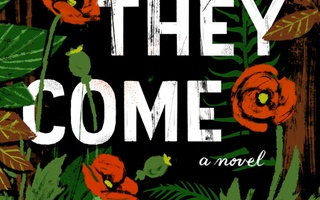Imagine spending the next two years with seven other people under a glass biosphere, in a prototype of what could become an “off-earth colony.” Herein lies the premise of T.C. Boyle’s “The Terranauts,” a novel that explores the ecological and psychological aspects of a sealed biome coined E2. In the biosphere, which is monitored by the all-seeing Mission Control, the novel follows the stories of three individuals: Dawn Chapman, the mission’s ecologist; Linda Ryu; her bitter best friend who was rejected from E2; and Ramsay Roothoorp, E2’s resident flirt. The book touts a mixture of complex characters and compelling storytelling; however, Boyle’s latest effort falls short due to stereotypical plotlines, unconvincing attempts at realism, and largely despicable main characters.
The multi-narration in “The Terranauts” is not atypical of Boyle’s works. His previous novel, “The Harder They Come,” likewise adopted the points of view from three interconnected stories. In this aspect, the book does particularly well: By providing different views of the environment and the characters of E2, the book exposes constant subjective contradictions and commentary on each character—especially Dawn Ramsay—allowing the reader to form a much more complete view of the passing events. Linda’s story, however, is significantly different; we receive an “outside” perspective and a view from Mission Control on the progress, or lack thereof, of the eight Terranauts.
While the format has potential to be captivating, its delivery falls short. Although the book advertises an equal perspective from each of the three characters, “The Terranauts” is, in fact, a story about Dawn. A majority of the events that pass are the result of Dawn’s actions, and a sizeable portion of the novel focuses on Dawn’s mental growth when she becomes pregnant with Ramsay’s child. The reader learns about her psychological struggles around the pregnancy and the biosphere’s attempts to care for Dawn’s new baby Eve. While Dawn’s actions and stories demonstrate her being proactive, the other two characters are simply reactive: Ramsay is used as a support and foil to Dawn, while Linda essentially revolves her life around Dawn’s actions, her narrative ultimately taking the shape of a revenge story without much room for personal development. At the end of the book, Linda mentions, in reference to Dawn, “My question is, why does my story always have to be her story?” The reader is left wondering the same.
Another troublesome characteristic is that the characters are generally contemptible. Ramsay is a largely manipulative and egotistical person, and Dawn is not too dissimilar. Linda, on the other hand, is someone consumed by the prospect of revenge, unable to think or decide rationally. All three characters share something in common: unlikeability. Both Ramsay and Linda are over-the-top stereotypes, and neither are particularly captivating. Dawn, on the other hand, is much more complex in her portions of the story, but the constant negatively-toned second person view of her character ends on a sour note, as if we had been fooled by Dawn’s own sycophantic words.
Despite these failing, Boyle manages to piece together several important messages regarding religion and absurdism, all from an environmental perspective. The clever allusions to Genesis in the Old Testament go above and beyond: The leader of Mission Control is nicknamed G.C., God the Creator, and Ramsay quips about his and Dawn’s child, “If it’d been a boy, we would have called him Adam.” Dawn also becomes an analogue to Mary Magdalene, and the biosphere as a whole seems Eden-like in its status as a new world. The story in “The Terranauts” is one that has been told many times, but Boyle adapts it to a modern setting and for a place that is dangerously unknown. His references to absurdism and existentialism are stronger and subtler. By tradition, the members in E2 regularly perform plays picked out by G.C., and these are blatantly absurd—Ionesco’s “The Bald Soprano” and Sartre’s “No Exit.” These works form an important pairing, as they highlight the paradox of a prophet-like journey by atheistic scientists and ultimately delivers an intriguing commentary on science and faith.
The back cover of “The Terranauts” describes a “sealed, three-acre compound comprising of five biomes—rainforest, savanna, desert, ocean, and marsh—and enough wildlife, water, and vegetation to sustain [E2].” Yet the captivating setting that Boyle teases in the beginning chapters is left unexplored. Instead, what we get is a disappointing soap opera, only in the setting of an abstractly different environment. Compared to Andy Weir’s “The Martian,” which at first appears to have a similar framework, “The Terranauts” disappoints, having not taken advantage of its most compelling characteristic: the premise. Instead of reading about captivating biological and natural disasters that the E2 cast must overcome, the reader is instead faced with a pregnancy scare and a public image crisis. The book provides an intriguing psychological outlook at the world but it is ultimately not a message worth trudging more than 500 pages to receive.Read more in Arts
An Eerie and Alive ‘Macbeth’Recommended Articles
-
Amusements.BOSTON THEATRE.- "The World," 8 p. m. GLOBE THEATRE.- Kiralfy's "Ma ulm," 7.45 p. m. PARK THEATRE.- "Jim the Penman,"
-
Students Celebrate End of RamadanThe Harvard Islamic Society held a post-fast fête yesterday to celebrate Eid-ul-Fitr, the holiday marking the end of Ramadan, a
-
Naturalistic Prose Enlivens ‘San Miguel’“Does life go on? It does,” T. C. Boyle writes in his latest novel “San Miguel.” This simple truth unites two families in Boyle’s fictionalized world of San Miguel, an island off the coast of California.
-
 'The Harder They Come' Comes Easily at a Hard Topic
'The Harder They Come' Comes Easily at a Hard Topic -
 The Word: Dawn
The Word: Dawn














